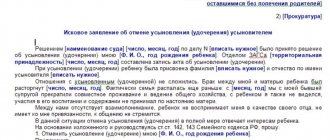The Civil Code has a chapter devoted to issues of obligations due to harm, otherwise called tortious. Its rules are based on the fact that you must compensate in full for the harm (personal or property, or both) that you caused to a citizen or legal entity.
The same code, and some others, establish that in certain cases someone else is responsible for you to the victim.
The concept of recourse or recourse claim is associated precisely with such cases of compensation for damage as a mechanism for restoring justice and preventing unjust enrichment.
The legislator has also provided for a number of other cases when such compensation can be requested.
There are many cases in modern legislation when someone else bears property liability for you. Let's say your actions on the road caused you to collide with another car, resulting in only property damage.
The victim contacted his insurer with a claim for direct compensation for losses, he paid it and demanded the amount from your insurer. And so the latter unreasonably decided to collect this money from you.
The legislator has established a closed list of reasons for which this is possible, and you are firmly convinced that none of them applies in your case. Competing with professional market participants alone is a disastrous proposition. We recommend that you contact an experienced insurance lawyer immediately.
Recourse compensation - what is it?
The right of recourse established by Article 1081 of the Civil Code is the right of the person who compensated the damage you caused to the victim to receive back from you the funds spent on this. The circle must be closed. The right to demand compensation from one entity gives rise to a corresponding obligation from another. This means that the obligation to compensate for damages in this manner arises in some cases if someone has incurred property liability for you.
Most often (but not only!) the right to receive such compensation arises, as we have already said, under obligations arising from causing harm. But within the framework of tort relations, this right can arise only in cases provided for by law.
It turns out that there are 2 types of tortfeasors: conditional (in a tortious obligation to the victim) and actual. For example, the employer must answer to other citizens or organizations for damage that you caused while acting on his behalf, that is, during working hours and within the scope of work duties.
The logic here is this: some responsibility - perhaps even in fact - lies with the employer, who may have failed to provide the necessary working conditions for his employee, was negligent in the selection of personnel, and so on. In addition to the above example, cases where the indemnifier has the right to retaliate include:
- Compensation by the state for damage caused to a citizen or organization by the actions of government authorities at all levels (federal, regional, local), in accordance with Article 1069 of the Civil Code.
- Compensation by the state for damage caused to a citizen or organization by illegal actions of employees of the bodies of inquiry, preliminary investigation, prosecutor's office and court, in accordance with Article 1070 of the Civil Code - illegal actions of these bodies mean illegal conviction, criminal prosecution, detention, etc. against citizens, as well as illegal administrative suspension of the activities of organizations.
- Compensation by the insurer for damage to the victim under a voluntary insurance contract concluded with you as a citizen or representative of an organization - not in the full amount, but only in part of what was paid in excess of the established amount (when the actual damage exceeded it), in accordance with Article 1072 of the Civil Code.
There are special cases where it is necessary to compensate for damage caused by a minor or incompetent person. Parents or guardians are usually responsible for them.
And even a person deprived of parental rights is responsible for his offspring for three years from the date of termination of these rights, if it can be proven that the lack of care and support on his part resulted in the child’s unlawful behavior.
However, all these cases do not imply that the parent or guardian has a right of recourse against the actual causer of harm. According to the logic of the legislator, the blame for such behavior of the child falls entirely on them, as those who allowed it to happen through oversight.
The right to claim by way of recourse also arises in such pairs of civil legal relations as: guarantor - borrower, contractor - subcontractor, owner and co-owner of real estate. Let's give another example: the relationship between the policyholder and the insurer under the MTPL policy.
According to the meaning of these relations, the insurer is responsible to the citizen injured in the accident on your behalf, paying him insurance compensation (you previously, when concluding the contract, pay him an insurance premium). But whether he demands from you the money spent will depend solely on your actions.
There are only 13 reasons for the insurer to have a claim against the culprit of the accident; they are listed in Article 14 of the law on compulsory motor liability insurance and represent a closed list. Among them: getting into an accident while intoxicated, fleeing the scene of an accident, driving without insurance or beyond its validity period, a deliberately provoked collision, and others.
Such conflicts can be resolved through a judicial procedure with preliminary compliance with the claim procedure. This means that you must first send a claim to the recourse party (the person for whom you were held responsible) demanding that you return what you paid. If he ignores the appeal or refuses it, we recommend going to court. You have the right to obtain compensation through the court for three years from the moment you have the right to recover within the framework of recourse.
What actions should you take if the insurance company has filed a recourse against you?
If the insurance institution filed a claim for recourse for failure to provide notification of an accident to the guilty party within the period established by law or on other grounds contained in Art. 14 Federal Law 40, you need to start protecting your rights.
According to Part 1 of Art. 12 of the Code of Civil Procedure, justice is carried out on the principles of competition and equality of the parties. Therefore, when challenging a claim, the defendant can use all the opportunities provided to him by law, for example:
- file a counterclaim (Articles 137, 138 of the Code of Civil Procedure);
- involve a trusted person in the case (Articles 53, 54 of the Code of Civil Procedure);
- submit objections (clause 2, part 2, article 149 of the Code of Civil Procedure), submit petitions and challenges.
Challenging the legality of payments
The driver has the right to challenge the recourse if the insurance company did not have the right to file it, for example:
- if the victim has not yet received the actual payment, that is, the money has not been transferred to his details;
- at least one of the grounds specified in Art. 14 Federal Law 40;
- the established statute of limitations has been missed;
- the victim did not have the right to receive payments, either he did not apply at all, or an unauthorized person applied.
Contesting guilt
According to Part 1 of Art. 56 of the Code of Civil Procedure, the insurance company is obliged to prove the presence of the circumstances it points to in the claim.
For example, if a claim is filed to recover damages caused by a perpetrator who was driving while drunk, then the insurer must present the following evidence to the court:
- certificate of examination (if the drunken state was confirmed by breathalyzer readings);
- medical certificate (if the motorist refused to “breathe into a tube” and was sent to the hospital).
Scope of compensation for damages by way of recourse
Damage by way of recourse is subject to recovery either in full or in another amount, if the legislator decides so. For example, according to Article 241 of the Labor Code, the financial liability of an employee to the employer has its limits.
This means that if the employer incurs property liability for you to others, then he still will not be able to demand from you more than the average monthly salary. Also, according to Article 242 of the same code, the employee, in principle, compensates the employer only for direct actual damage, but not for lost profits.
If the employee is a minor (and a teenager in our country can work under an employment contract from the age of 14), then he generally bears full responsibility only if he caused damage intentionally, while under the influence of alcohol or drugs, or by committing an administrative offense or crime .
It happens that damage to property or person was caused by several citizens jointly. In this case, the amount of compensation must be calculated in proportion to the degree of guilt, since they bear joint or solidary liability.
However, calculating such a proportion is not so easy, so usually the responsibility falls equally on the shoulders of the co-debtors. As a result, if one of them has fully compensated everything due to the victim, he has the full “recourse” right to demand the return of what was paid from his other “comrades” in accordance with their shares.
To summarize: the reverse claim procedure occurs when someone pays for damage caused to a person or legal entity by someone else.
There are situations when you are obliged to pay for damages that you did not cause, and do not have the right to compensation from the actual perpetrator of the tort: for example, this is the responsibility of a parent or guardian for the actions of minor children and incapacitated wards.
In this case, the damage must stem from a tort - the fact of causing harm - that occurred within the framework of insurance, surety and other legal relations. Usually it is reimbursed in full, with the exception of cases of labor law, in which the employee’s financial liability to the employer is limited to the average amount of his salary.
Sources:
About the right of recourse
Limited financial liability of the employee
Grounds for the emergence of the right of recourse of the insurer under compulsory motor liability insurance against the culprit of the accident
Calculation of the amount of recourse filed by the insurance company against the person at fault in a road accident
Calculation of recourse to the culprit of the accident is carried out using a simple formula:
SKP + SPRSS, where:
- SKP - the amount of compensation paid to the victim (it is calculated in the same manner as if there was no recourse);
- SPRSS - the amount of other expenses associated with the consideration of an insured event (Part 3 of Article 14 of Federal Law 40) - for example, for conducting an independent examination.
What date is 05/1/2019?
It was on this day that an important event took place in the legislation on compulsory motor liability insurance. If before May 1, 2021, the insurance company could legally, for violation of the deadline for submitting the notification form by the culprit, issue a recourse to its insurance company - claiming the entire amount paid to the victim, then after this date such a right of the insurer was canceled by the relevant Federal Law-88.
Thus, if the insurance policy itself was purchased before May 1, 2019 and the European protocol was issued before May 1, then the recourse will be completely legal, and it is very difficult to avoid it. If later, then the insurer’s requirements are not based on current legislation.
Below we will talk about situations where insurance was purchased before May 1, 2019, that is, the insurer’s right to issue recourse remains legal on the date of conclusion of the compulsory motor liability insurance agreement.
Three ways to minimize recourse payments
To ensure that the recourse amounts do not hit your pocket with their size, you can take some measures.
- The first thing you can do if guilt is proven and recourse cannot be avoided is to agree with the insurance company on an installment plan. A bilateral agreement is signed, which allows you to avoid trial and make payments feasible for the guilty party.
- You can purchase a DSAGO policy in advance - this is additional insurance, which in the event of an accident due to the driver’s fault will cover damage in an amount not exceeding 1,000,000 rubles.
- Even if the accident was caused by the driver, he should take an active position in the process of settling losses.
It is important to be present during the examination of the vehicle and make sure in person that the damage as a result of the accident was assessed. It happens that the expert attributes damage to the car that is not related to the incident to the conclusion. This could be wear and tear on the vehicle or other damage that has nothing to do with the accident in question. You can file a petition in court to familiarize yourself with the examination materials and check whether depreciation is calculated correctly.
The court can also be provided with evidence, including testimony of witnesses, which will serve as justification that the culprit could not have prevented the incident. If the evidence satisfies the court, it may influence the reduction of the amount subject to forced collection.
How to avoid - practical advice
To avoid receiving a regression request, you must adhere to the following simple recommendations::
- strictly comply with all the rules established by the insurance company regarding the registration of an accident (deadlines for sending notifications of an accident, presenting the car for inspection, etc.);
- do not drive while intoxicated;
- renew the MTPL policy in a timely manner, avoiding its delay;
- do not give your car to persons who are not included in the insurance (for limited compulsory motor liability insurance);
- Be sure to carry your driver’s license with you in the car;
- Under no circumstances leave the scene of the accident without waiting for the traffic police to arrive;
- carry out technical inspection of the machine in a timely manner;
- comply with other requirements provided for by law.
In what cases can damages be recovered from the culprit of an accident?
Despite the fact that the protection of the rights of victims to compensation for harm caused by other persons during the operation of a vehicle, the introduction of the institution of compulsory liability insurance by the legislator is mandatory, its implementation is not always possible. Then the recovery of damages is carried out by the injured party directly from the culprit of the road accident.
Such cases include:
- lack of insurance;
- refusal of the insurance company to indemnify;
- incomplete reimbursement;
- the amount of damage exceeds the liability limit of the insurance company;
- The deadline for contacting the insurer has been missed.
The absence of an insurance policy is equivalent to circumstances when the contract has expired and new relationships with the insurer have not been settled.
One of the grounds for refusing compensation for damage is the insurer’s failure to recognize the insured event, or the event is not provided for by the contract at all.
Under such circumstances, recovery from the person responsible for the accident is resolved through civil proceedings. You should first enter into negotiations with the debtor to be able to resolve the issue on a voluntary basis.
https://www.youtube.com/watch?v=jdBzItGwWQk&t=3s
Is it possible to restore the statute of limitations if it has expired?
Circumstances may arise in any person's life that prevent him from using the three-year period to file a lawsuit. If the reason was valid, the law provides for the opportunity for a motorist injured in an accident to have it restored through the courts.
Only individuals can exercise the right to restore deadlines. This option does not apply to legal companies and individual entrepreneurs who own damaged cars. The Plenum of the Supreme Court clearly stated this in its Resolution No. 43 of September 29, 2015.
In order to restore the expired period, the injured car owner must write an application to the court, setting out in the document the circumstances that did not allow him to timely collect funds from the debtor (or company), and attach to it documentary evidence of his words, for example, health certificates. When filing an application, the victim’s task is to convincingly prove to the court that he could not, due to the prevailing life circumstances, meet the deadline allotted by law.
If, when resolving controversial issues related to compensation for damages for an accident, the parties cannot reach an agreement out of court, the only way to restore justice is to file a claim in court. Such situations are not uncommon, but any of them will bring the desired effect only if the injured party has correctly taken into account the statutory limitation period for the claim and the procedure for calculating it in a particular case.
Possible amount and example of its calculation
The amount to be paid under a recourse claim is determined based on the amount of compensation made by the insurer in favor of the injured party.
However, this amount may also include additional costs associated with the proceedings. When determining the amount of damage, the results of damage examination, as well as wear and tear of the machine and its individual spare parts are taken into account.
In accordance with Art. 7 of the Federal Law of the Russian Federation “On Compulsory Motor Liability Insurance”, the amount of compensation for damage caused to the life or health of another person cannot exceed 500,000 rubles, and to property – 400,000 rubles.
For example, an accident occurred on the highway, as a result of which driver A caused damage to driver B’s car. The insurance company inspected the vehicle, conducted an examination and, based on this, paid the amount of damage to the driver in the amount of 120,000 rubles. In this case, the insurer incurred additional expenses in the amount of 10,000 rubles.
Thus, in this case, the amount of compensation for the regression claim will be: 120,000 + 10,000 = 130,000 rubles.
Algorithm of actions upon receipt of a recourse claim
First of all, you need to check whether the information provided in the notice from the insurance company is accurate. To do this, you need to find out certain information regarding what happened, namely:
- Clarify whether the time and place of the accident corresponds to the information reflected in the notification of the state traffic inspectorate.
- Check the list of participants in the incident.
- Check what the damage was and whether the amount of compensation is proportionate to it.
- Ask if the claim has expired.
The statute of limitations for recourse claims is three years. The countdown starts from the date of actual receipt of compensation from the insurance organization into the account of the injured person.








